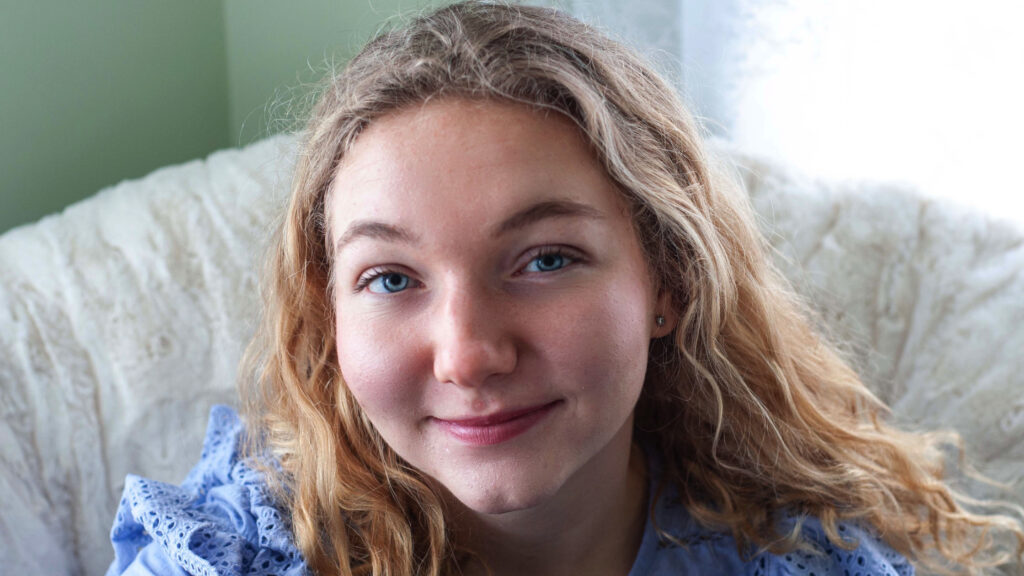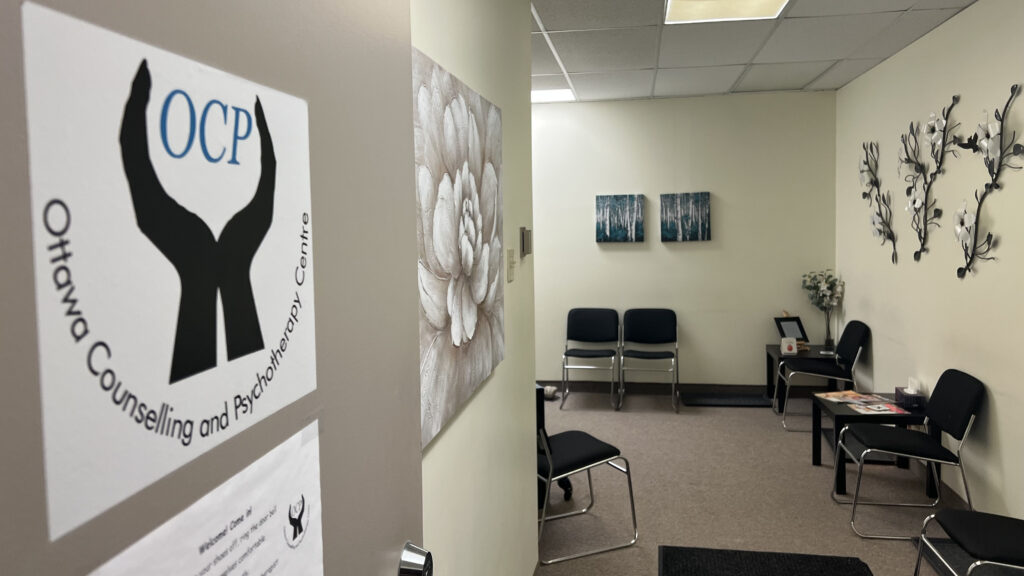By: Taylor O’Brien
The first therapy session Sarah Cupello ever attended was over Zoom.
It was at the height of the pandemic. Cupello, then 22, was living in Canada. When she moved to Italy months later, the time difference made connecting with her original therapist logistically challenging. She had also just moved into a place with many roommates and little privacy.
Cupello switched to BetterHelp, a platform that offers therapy through video, live chat and phone call sessions. The platform brands itself on providing therapy that is accessible anywhere, at any time.
This was exactly the kind of service Cupello needed. It offered more flexibility when it came to scheduling, and the live chat option offered her privacy not possible through Zoom.
More than anything, though, it helped her to open up.
“It made it a lot more accessible and just easier to share because [the therapist is] not someone in my town,” Cupello said. “I don’t think I would’ve started [opening up] as fast if it was in person.”
Cupello is among a growing number of people taking therapy sessions online. The COVID-19 pandemic both increased the number of people seeking therapy, and changed the nature of the therapy they access. As a post-pandemic society emerges, clients, mental health physicians and experts agree: the modern-day method has benefits beyond the forced isolation of the pandemic and is part of a new approach to getting mental health support.
COVID-19’s negative impact on mental health
A 2021 Statistics Canada report showed the number of Canadians aged 18 and older experiencing symptoms of depression, anxiety and post-traumatic stress disorder increased from 21 to 25 per cent between the fall of 2020 and the spring of 2021.
Among this group , 94 per cent attributed the decline in their mental health to the COVID-19 pandemic. Respondents cited feelings of isolation and loneliness, physical health problems, and increased pressure on relationships as the most common causes for this decline.
Dr. Allison Ouimet is a licensed clinical psychologist who teaches psychology at the University of Ottawa. She said a spike in mental health problems encouraged many people to start therapy at the beginning of the pandemic.

“What we actually see in the data is that when the pandemic first started, we saw these big increased rates in reporting anxiety, depressed mood, etc.,” Ouimet said.
But with this increased need for mental health support came new means of connecting with it.
Ouimet said the forced isolation of the pandemic made a new kind of therapy possible that was both safer and more accessible.
“Psychologists, in particular, are often underrepresented in rural settings,” Ouimet said. “There are lots of places where it’s hard to get mental health care … It helps some people access therapy when they otherwise couldn’t.”
Pooneh Montazeralsedgh is an independent psychotherapist who is part of the Ottawa Counselling and Psychotherapy Centre. She offers both in-person and online sessions.
Montazeralsedgh said online therapy offers greater scheduling flexibility for clients and saves them commuting costs.
Beyond this, she thinks online therapy has gained popularity because it allows clients to do therapy in “the comfort of their own home.”
“It gives them that safe space they have created, like their own room … or their office, to almost allow them to actually open up better.”

You’ve lost that lovin’ (in-person) feelin’
For some, the intimacy of the in-person meeting is irreplaceable.
Sydney Timmermans, 23, started going to therapy when she was about to start high school. While she’s tried phone and online video sessions, she prefers the traditional face-to-face set up.
“I really liked being able to go, sit there, actually talk with [my counsellor and] be in the presence of an actual human being,” Timmermans said, adding she enjoyed the process of building a rapport with her counsellor.
Speaking from her experience conducting research interviews both in-person and over Zoom, Timmermans understands the advantages and disadvantages with both.
“To be able to interact with the person face-to-face … I feel like I got so much more out of the experience,” she said. “Although Zoom … is great too, I can see how [with] physical face-to-face you could get those connections so much faster.”

Ouimet said virtual therapy also has downsides for practitioners.
Online therapy “limits clinicians’ ability to notice other details,” Ouimet said. “For example, we miss out on some body language. We might miss out on if somebody’s clothing has changed a lot over time. Sometimes that’s an important clinical observation we might not see online.”
Montazeralsedgh still believes it’s possible to create a similar personal bond online to one developed in-person.
“I find that it doesn’t really take away from the level of vulnerability or openness they can have with a therapist.”
But she has also seen clients become distracted when doing their virtual sessions.
“There is still a difference when you have that in-person interaction with someone where you’re both fully present, physically in the same room,” she said. “A lot of it has gone back to wanting to have that in-person touch.”

The future of therapy
The shift to online therapy is part of a larger trend of people doing everything from home.
In the post-pandemic era, a large number of jobs and services have moved online and therapy has followed suit. Montazeralsedgh said for this reason, she thinks it will last.
Ouimet agrees. While society faces the aftermath of the COVID-19 pandemic, she said she thinks online therapy is here to stay, and she doesn’t think this is necessarily bad for the people seeking support.
“The research overwhelmingly shows that online therapy and in-person therapy are about equivalent in terms of their effectiveness,” Ouimet said.
For Cupello, switching to BetterHelp meant she was able to keep seeing the therapist she connected with in Italy when she moved back home to Canada.
While the option to return to in-person exists, Cupello doesn’t see that happening anytime soon. For her, the consistency of continuing with her virtual therapist is worth more than any in-person connection.
––––––––––––––––––––––––––––––––––––––––––––––––––––––––––––––––––––––––––––––
If you or someone you know is struggling with their mental health, here are organizations you can look to for help and support:
- Kids Help Phone: 1-800-668-6868, the live web chat or text.
- Connex Ontario: 1-866-531-2600 or live web chat
- Canadian Crisis Hotline: 1 (888) 353-2273
- Wellness Together Canada: 1-866-585-0445 or text WELLNESS to 686868 for youth and 741741 for adults




